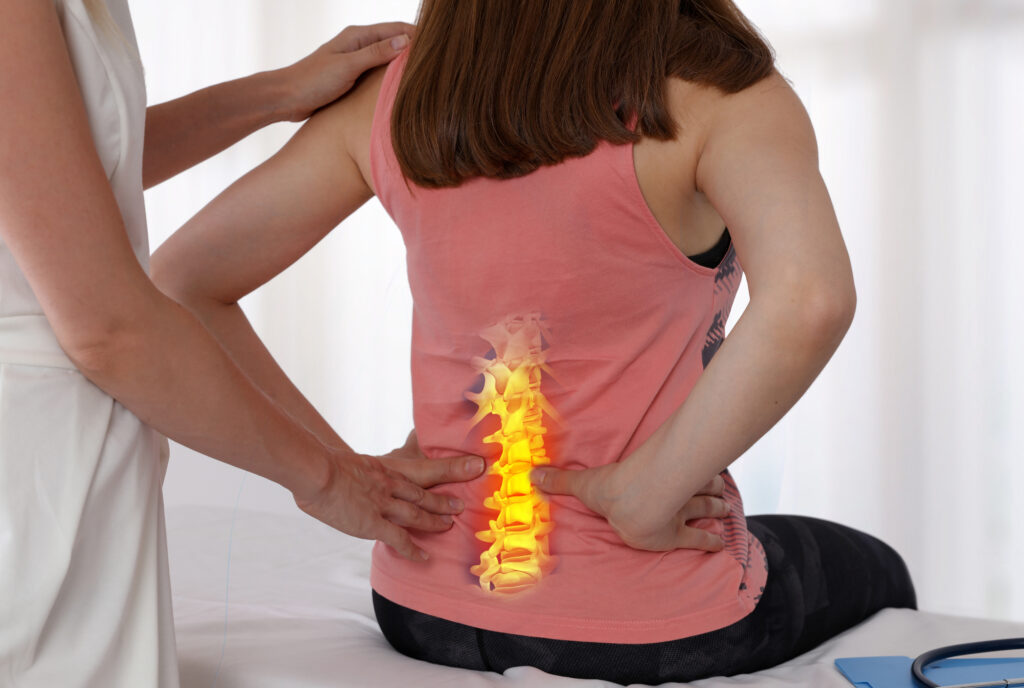Spinal cord injuries are devastating and have the potential to impact every aspect of your life. Leading to expensive medical bills, time off from work, and precious time away from your family. Call a spinal cord injury lawyer at Cantor Grana Buckner Bucci today for a free consultation if you or a loved one are suffering from a spinal cord injury.
You may be eligible for compensation from the party responsible for your injuries. We can help you recover compensation for medical expenses, lost wages, and pain and suffering.

Spinal Cord Anatomy
The central nervous system is made up of the brain and spinal cord. The spinal cord is the primary nerve center in the body, composed of many nerve fibers that serve as a pathway, transmitting messages between the brain and other parts of the body. The spinal cord is protected by vertebrae, bones that are stacked on top of each other.
The spinal cord is approximately 17 inches long and is surrounded by 33 individual vertebrae. The spinal cord runs through the middle of these vertebrae, extending from top to bottom in 4 sequential sections: the cervical, thoracic, lumbar, and sacral areas.
As a general rule, the cervical area controls the movement and sensory perception of the head and neck, the upper extremities, and movement of the diaphragm; the thoracic area controls the chest and abdominal muscles; the lumbar area controls the lower extremities; and the sacral area controls the bowel, bladder, and sexual function.
Types of Spinal Cord Injuries
The spinal cord can be damaged by trauma or disease. A traumatic spinal cord injury occurs when the spinal cord is bruised, compressed, swollen, or torn. Such injuries typically occur when the vertebrae column is damaged, causing pressure or directly impacting the spinal cord or adjacent nerve fibers.
Complete Spinal Cord Injuries
A complete spinal cord injury refers to a total loss of sensation and movement below the level of the spine. Complete injuries often result in the patient using a wheelchair and losing control of the bowel and bladder and placing the patient at risk for many associated problems, including bedsores, infections, and respiratory difficulties. Common complete spinal cord injuries include:
- Quadriplegia: People with cervical spinal cord injuries lose full feeling and motion to the cervical area and down.
- Paraplegia: Someone who has suffered a full loss of feeling and function in the lower parts of the body.
Cervical Spinal Cord Injuries
Cervical spinal cord injuries can be caused by car accidents, falls, or sports injuries. These injuries can result in partial or complete paralysis of the arms and legs. In some cases, cervical spinal cord injuries can also lead to death.
Incomplete Spinal Cord Injuries
An incomplete injury varies from person to person. In some people, sensory and motor functions are slightly compromised. In others, these functions may be eliminated.
An incomplete spinal cord injury often results from compression or damage to the spinal cord that reduces the brain’s ability to send signals below the injury site. Some of the most common incomplete spinal cord injuries include:
- Anterior Cord Syndrome occurs when there is damage to the front of the spinal cord. This can result in loss of motor function, sensation, and autonomic function below the level of injury.
- Brown-Sequard Syndrome occurs when there is a partial injury to either the right or left side of the spinal cord. This can result in a loss of motor function and sensation below the level of injury and contralateral loss of proprioception and touch.
- Central Cord Syndrome is most often seen in older patients and results from spinal cord compression in the cervical region. This can cause loss of motor function, sensory deficits, and bowel or bladder dysfunction.

Common Causes of Spinal Cord Injuries
Most spinal cord injuries occur due to:
- Motor Vehicle Accidents
- Workplace Injuries
- Sports-Related Injuries
- Falls
- Gunshot Wounds
- Medical Complications
- Bicycle Accidents
Spinal Cord Injury Symptoms
An acute spinal cord injury is caused by trauma to the spinal cord and is a medical emergency that needs to be treated right away. Common symptoms include:
- Loss of motor function
- Loss of sensation
- Paralysis
- Muscle spasms
- Chronic Pain
- Sexual dysfunction
- Loss of bladder and bowel control
- Respiratory problems
- Frequent infections
As a general rule, the higher the injury is on the spinal cord, the more devastating its effects are on the injured person. After a spinal cord injury, only the nerves below the level of the injury are affected; the nerves above the injury often remain fully functional. Consequently, someone who has sustained an injury to the cervical spinal cord may suffer more loss of function than someone who has sustained a lumbar injury.

Treatment for Traumatic Spinal Cord Injuries
The first step in spinal cord injury treatment is stabilizing the spine and removing any bone fragments or objects that might press on the spinal column to prevent further damage. This may require surgery, immobilization, or both. Once the spine is stabilized, treatment focuses on rehabilitation and managing complications.
Rehabilitation
Rehabilitation for a spinal cord injury typically begins in the hospital. You will work with a team of specialists to regain as much function and independence as possible. Rehabilitation may continue for months or years after the initial injury.
Physical and Occupational Therapy
Physical therapy is an important part of rehabilitation for a spinal cord injury. Physical therapists can help you regain strength and mobility and manage pain.
Occupational therapists can help you learn how to perform activities of daily living, such as dressing, cooking, and bathing. They can also provide adaptive equipment to make these tasks easier.
Managing Complications
Spinal cord injuries can cause a variety of complications, such as:
- Pain
- Muscle spasms
- Sexual dysfunction
- Bowel and bladder problems
- Respiratory problems
- Depression
Your treatment team will work with you to manage these complications and improve your quality of life.
Speech Therapy
If you have difficulty speaking or swallowing after a spinal cord injury, speech therapy can help. Speech therapists can also teach you alternative methods of communication, such as sign language.
Psychotherapy
Psychotherapy can help you deal with the emotional effects of a spinal cord injury. You may feel depressed, anxious, or angry after your injury. Psychotherapy can help you cope with these feelings and adjust to your new life.
Contact a Lawyer at Cantor Grana Buckner Bucci Today
Developments in the care and treatment of spinal cord injuries have resulted in a much greater return of function for patients with incomplete injuries and a much greater ability for patients with complete injuries to adapt to their condition successfully. Consultation with a rehabilitation specialist or life care planner experienced with spinal cord injuries is essential for the trial lawyer handling a spinal cord injury case.
The trial lawyer handling spinal cord injuries should understand the basic mechanism of spinal cord injuries, the effect of such injuries on their client, and the treatment regimen for such injuries.












